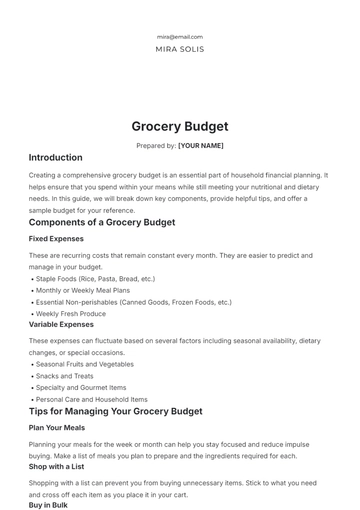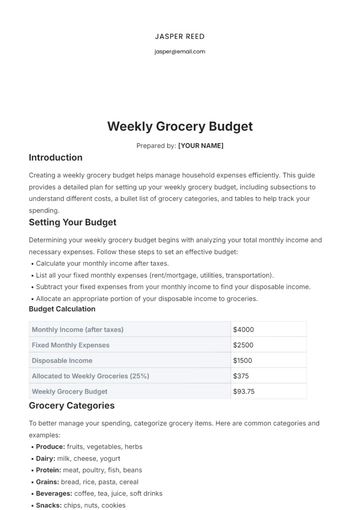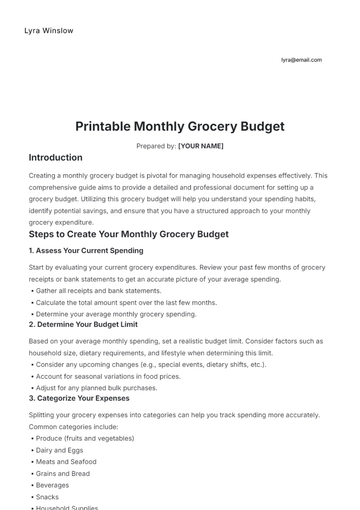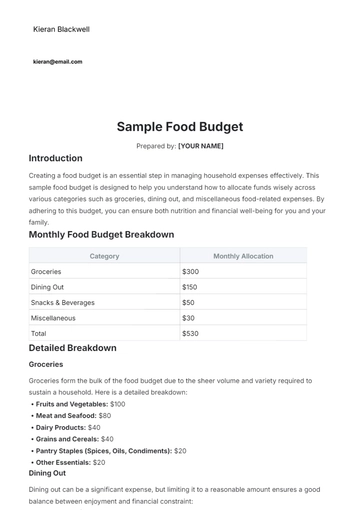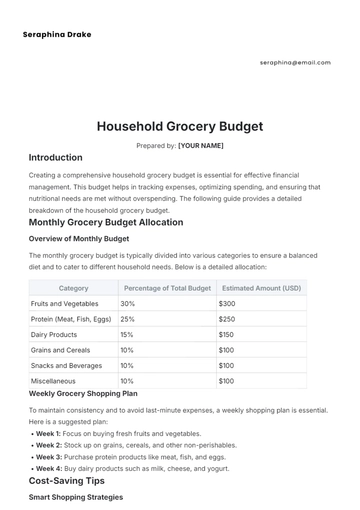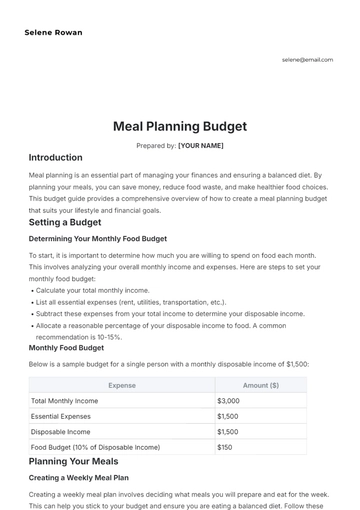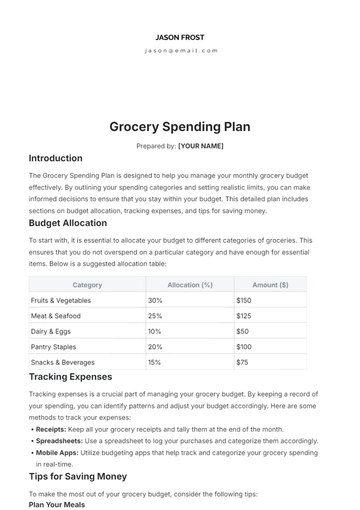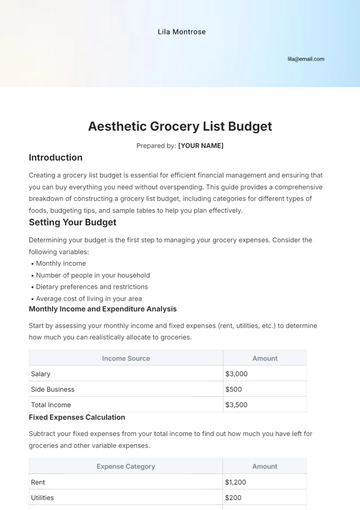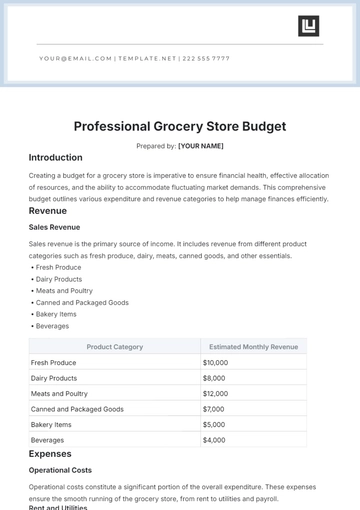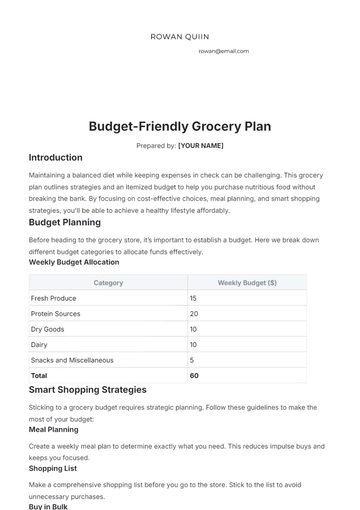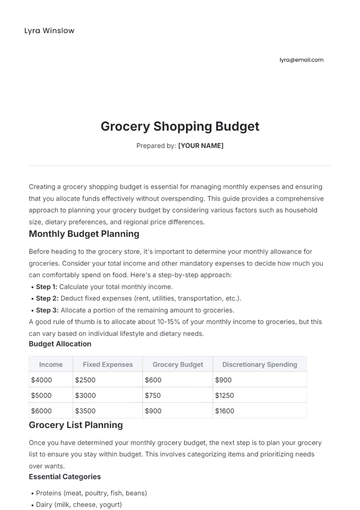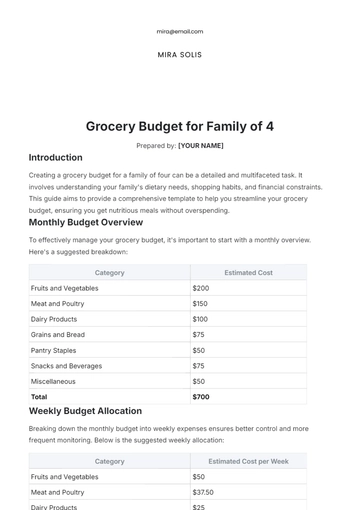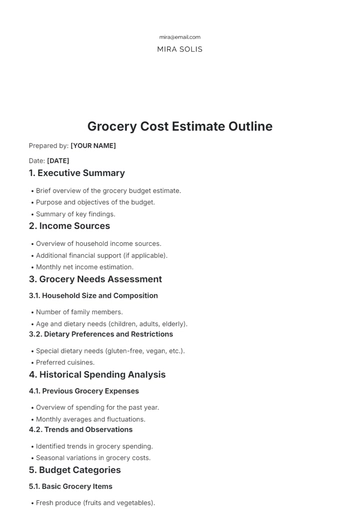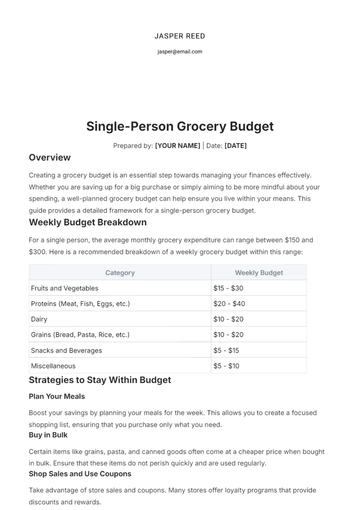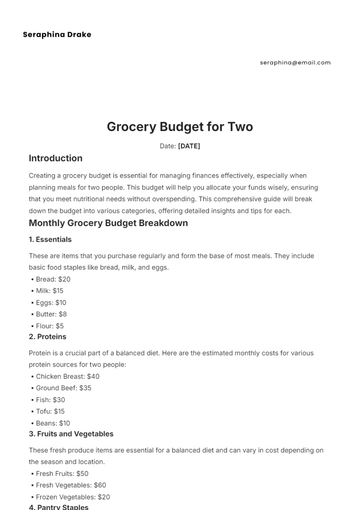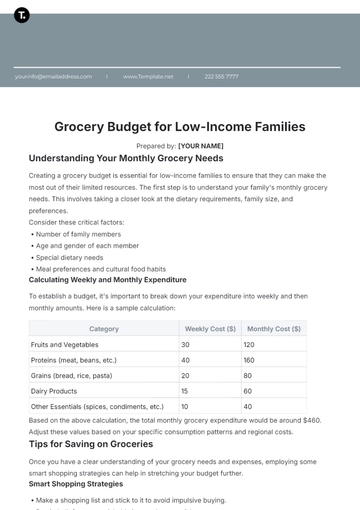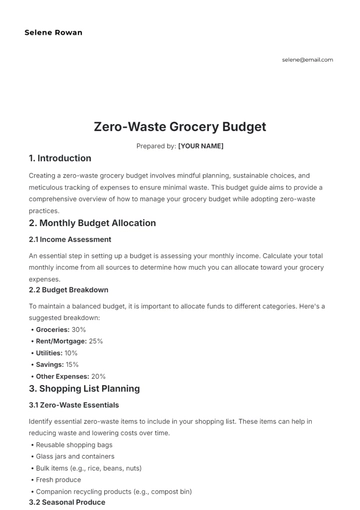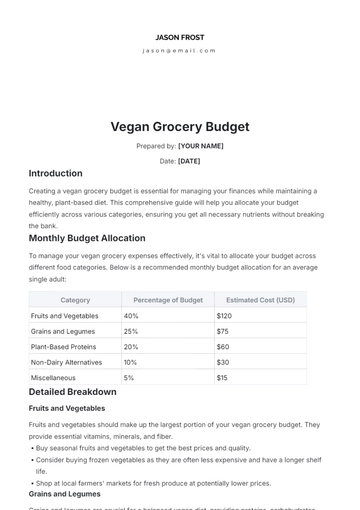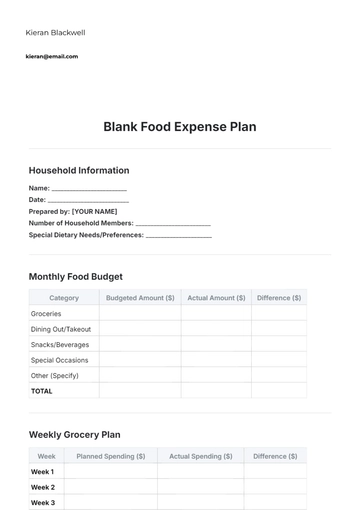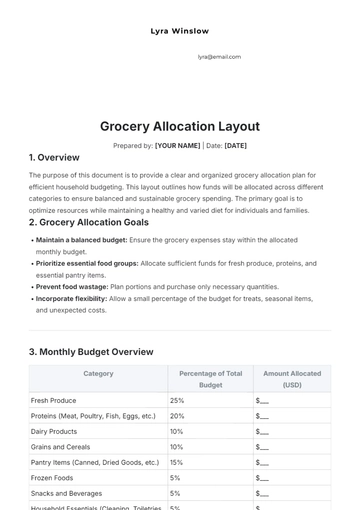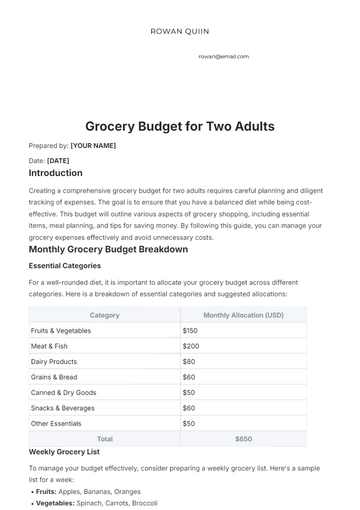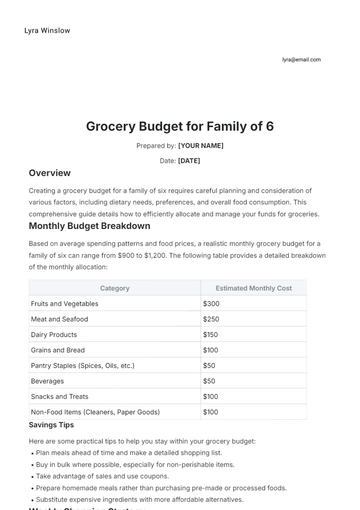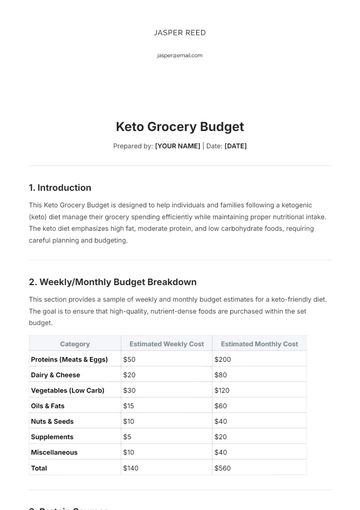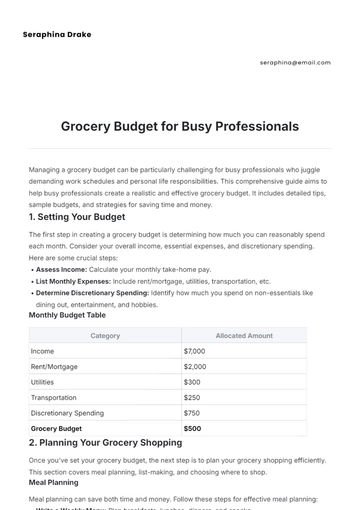Free Grocery Budget for Low-Income Families
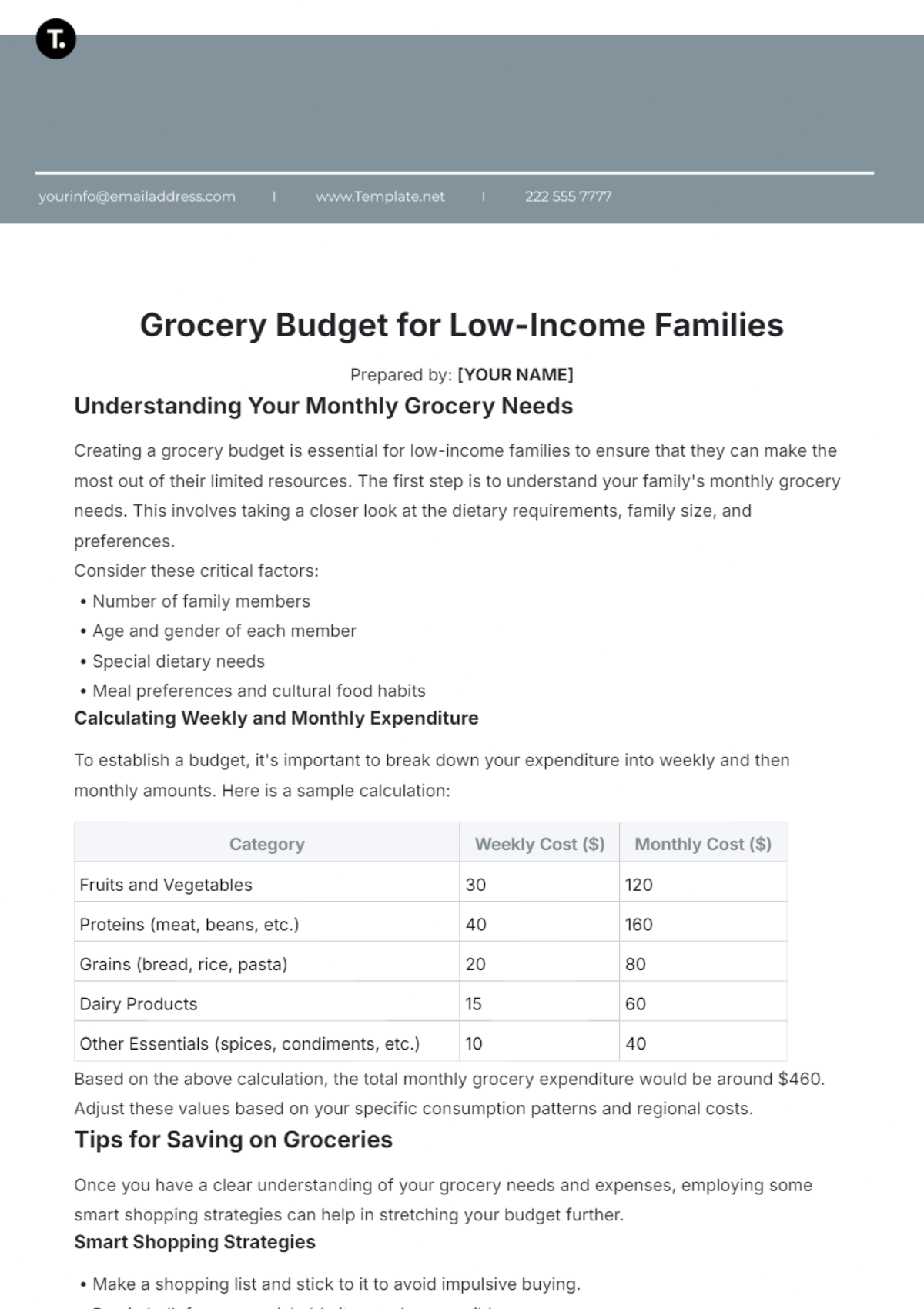
Prepared by: [YOUR NAME]
Understanding Your Monthly Grocery Needs
Creating a grocery budget is essential for low-income families to ensure that they can make the most out of their limited resources. The first step is to understand your family's monthly grocery needs. This involves taking a closer look at the dietary requirements, family size, and preferences.
Consider these critical factors:
Number of family members
Age and gender of each member
Special dietary needs
Meal preferences and cultural food habits
Calculating Weekly and Monthly Expenditure
To establish a budget, it's important to break down your expenditure into weekly and then monthly amounts. Here is a sample calculation:
Category | Weekly Cost ($) | Monthly Cost ($) |
|---|---|---|
Fruits and Vegetables | 30 | 120 |
Proteins (meat, beans, etc.) | 40 | 160 |
Grains (bread, rice, pasta) | 20 | 80 |
Dairy Products | 15 | 60 |
Other Essentials (spices, condiments, etc.) | 10 | 40 |
Based on the above calculation, the total monthly grocery expenditure would be around $460. Adjust these values based on your specific consumption patterns and regional costs.
Tips for Saving on Groceries
Once you have a clear understanding of your grocery needs and expenses, employing some smart shopping strategies can help in stretching your budget further.
Smart Shopping Strategies
Make a shopping list and stick to it to avoid impulsive buying.
Buy in bulk for non-perishable items when possible.
Opt for generic brands instead of premium ones.
Utilize coupons and discount codes.
Purchase seasonal produce as it tends to be cheaper.
Meal Planning and Preparation
Meal planning is a powerful tool, enabling you to save money and reduce food waste. Here's how you can approach it:
Plan your meals ahead: Create a weekly meal plan and shop accordingly.
Cook in bulk: Prepare and freeze meals in bulk to save both time and money.
Use leftovers effectively: Incorporate leftovers into new meals to reduce waste.
Community Resources and Assistance
Low-income families can also benefit from various community resources and assistance programs designed to alleviate grocery expenses. Examples include:
Government Assistance Programs
Supplemental Nutrition Assistance Program (SNAP): Provides benefits to supplement the food budget of needy families.
Women, Infants, and Children (WIC): Offers food assistance for low-income pregnant women, breastfeeding mothers, and children under five.
Local Food Banks and Pantries
Many local food banks and pantries offer free groceries to families in need. Check your local community resources to locate these services and understand their requirements.
- 100% Customizable, free editor
- Access 1 Million+ Templates, photo’s & graphics
- Download or share as a template
- Click and replace photos, graphics, text, backgrounds
- Resize, crop, AI write & more
- Access advanced editor
Help stretch your grocery dollars with Template.net’s Grocery Budget for Low-Income Families Template. This customizable template is tailored to help families on tight budgets maximize their grocery spending. Editable in our AI Editor Tool, the template offers clear sections for tracking essential purchases, meal planning, and finding savings without compromising nutrition.
You may also like
- Budget Sheet
- Personal Budget
- Non Profit Budget
- Monthly Budget
- Project Budget
- HR Budget
- Company Budget
- Home Budget
- Weekly Budget
- College Budget
- Business Budget
- Construction Budget
- Small Business Budget
- Hotel Budget
- Annual Budget
- Home Renovation Budget
- Household Budget
- Student Budget
- Grocery Budget
- Marketing Budget
- Corporate Budget
- Startup Budget
- Manufacturing Budget
- Church Budget
- University Budget
- Annual Budget Plan
- Event Budget
- Operating Budget
- Travel Budget
- Food Budget
- IT and Software Budget
- School Budget
- Real Estate Budget
- Sales Budget
- Conference Budget
- Budget Finance
- Freelancer Budget
- Budget Advertising
